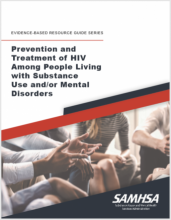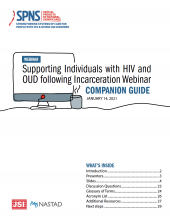
Data partnerships help coordinate HIV and opioid use disorder (OUD) services across state programs. These relationships can help state agencies identify service overlap and gaps, identify common goals, and initiate collaboration.



Data partnerships help coordinate HIV and opioid use disorder (OUD) services across state programs. These relationships can help state agencies identify service overlap and gaps, identify common goals, and initiate collaboration.
State health departments must dedicate staff and time to ensure a consistent approach to HIV and opioid use disorder (OUD) service delivery. For some states, this means creating new staff roles.
This resource describes how state health departments and other public health organizations can partner with people with HIV and/or who use(d) drugs in programmatic and policy making processes and evaluation.
Harm Reduction Hacks is a comprehensive microsite and resource to guide organizations developing new and/or existing syringe services programs in program design, implementation, and organizational sustainability.
Substance Abuse and Mental Health Services Administration (SAMHSA)
Harm reduction strategies and tools should be accessible to everyone – regardless of location, time, and/or experience.
Language is foundational to how we understand and interact with ourselves and others. Unclear language can lead to confusion and inefficiencies, while stigmatizing and prejudicial language leads to harmful practices and dehumanizes people.
This series of videos shines a light on the HIV testing experiences of four individuals. Each story is unique, but they all challenge the HIV provider community to reflect upon how to provide inclusive, empathic, culturally responsive, and stigma free HIV testing, treatment, and prevention.
This month, the Department of Health and Human Services (HHS), through the Substance Abuse and Mental Health Services Administration (SAMHSA), announced three funding opportunities to strengthen mental health and substance use systems and services for people with or affected by HIV: